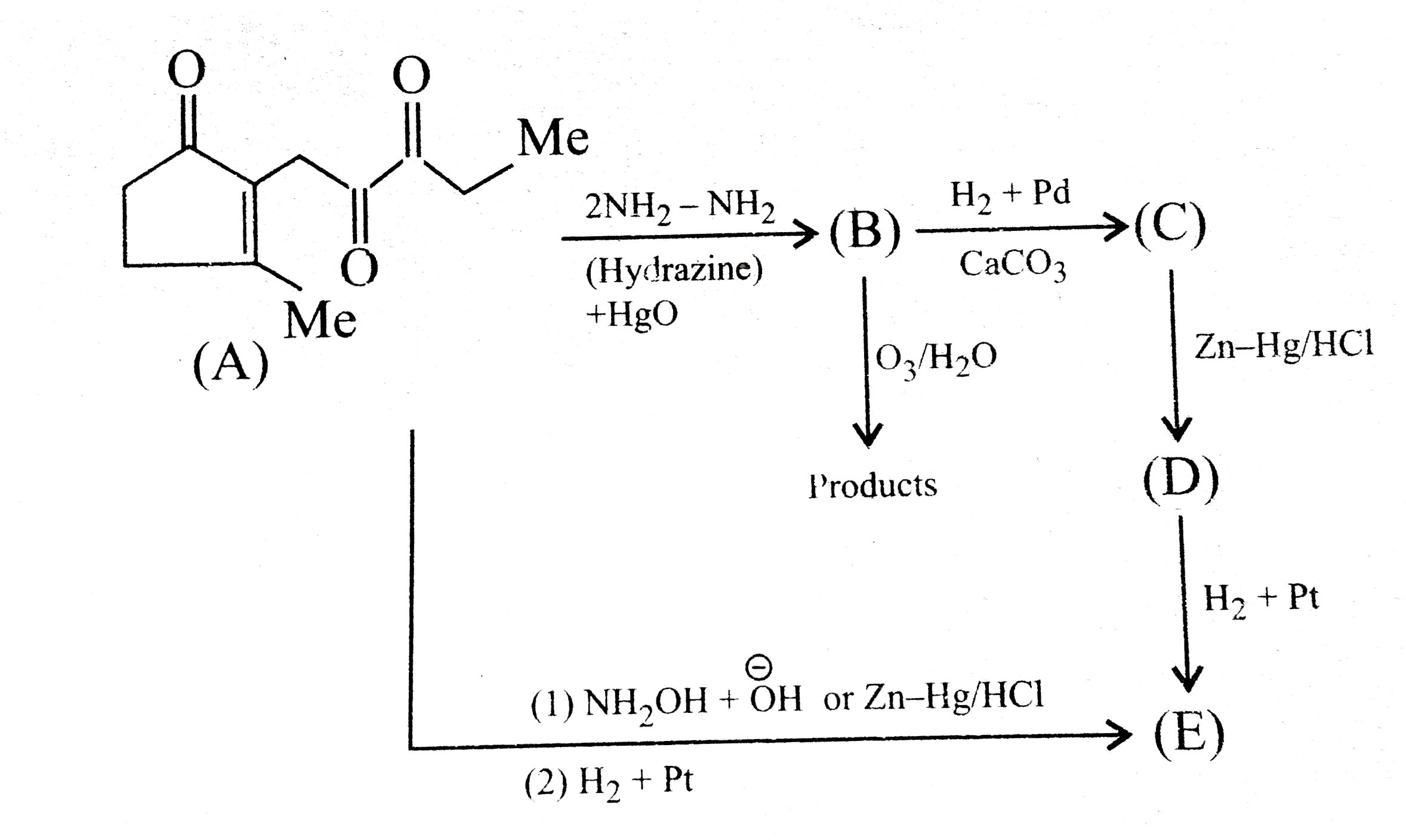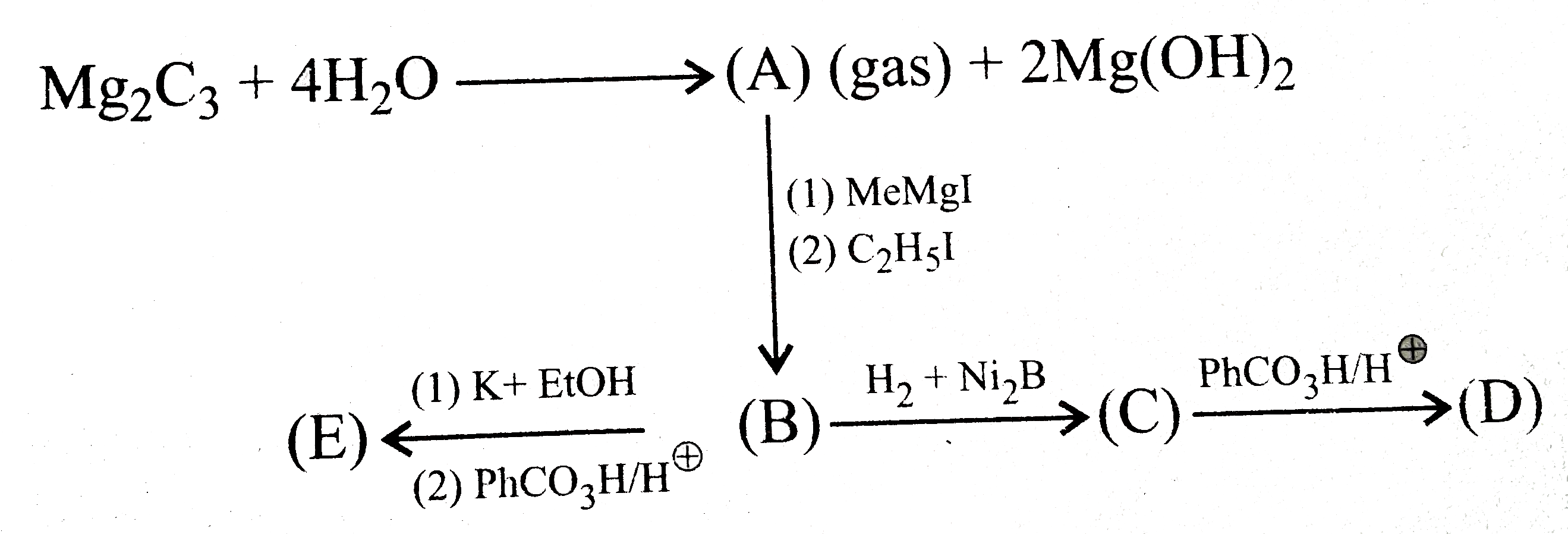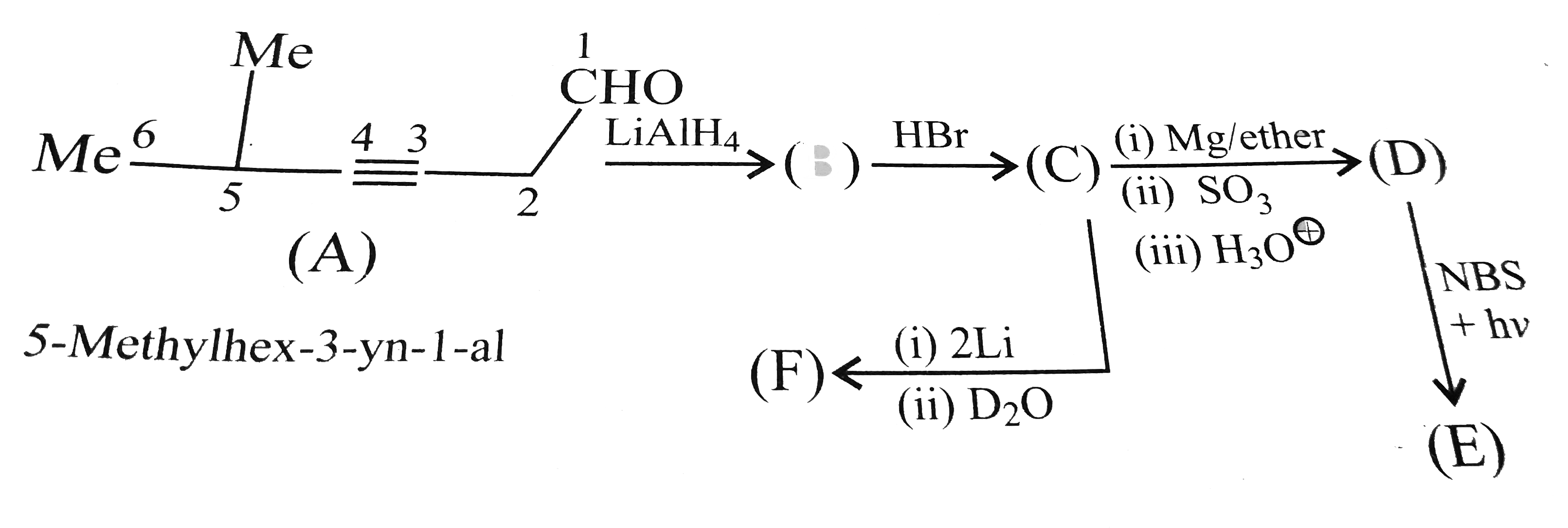A white 'A' on heating decomposes to produce two products 'B' and 'C'. 'B' on reaction with white phosphorous produces 'D', which is a strong dehydrating agent. 'D' on reaction with perchloric acid converts it to its anhydride.
The product obtained on hydrolysis (complete) of D is:
mixture of H3PO3 and H3PO4
only PH3
only H3PO4
mixture of H3PO3 and H3PO2
The correct Answer is:C
NH4NO3Δ−−→N2O+H2O
N2O+P4→P4O10+N2
HClO4+P4O10→Cl2O7+HPO3
A=NH4NO3,C=H2O,D=P4O10
P4O10+6H2O→4H3PO4.
Topper's Solved these Questions
- 15TH GROUP ELEMENTSBOOK - NARAYNACHAPTER - 15TH GROUP ELEMENTSEXERCISE - Complete the following reactions
25 Videos
- 15TH GROUP ELEMENTSBOOK - NARAYNACHAPTER - 15TH GROUP ELEMENTSEXERCISE - Example
15 Videos
- 15TH GROUP ELEMENTSBOOK - NARAYNACHAPTER - 15TH GROUP ELEMENTSEXERCISE - Level-V
163 Videos
- ELECTRO CHEMISTRYBOOK - NARAYNACHAPTER - ELECTRO CHEMISTRYEXERCISE - SUBJECTIVE QUESTIONS
48 Videos
- 16 TH GROUP ELEMENTS BOOK - NARAYNACHAPTER - 16 TH GROUP ELEMENTS EXERCISE - EXERCISE - 4 NCERT EXAMPLERS/H.O.T.S.
18 Videos
Similar Questions
A colourless inorganic compound (P) decomposes on heating to give two products (Q) and (R). (Q) is a colourless neutral gas with a sweet odour which when burnt with phosphorous produces a strong dehydrating agent (S) while (R) is a neutral liquid at room temperature. Identify P, Q, Rand S.
View SolutionExplain the formation of products (B), (C), and (D) in the following reaction.

View Solution
Knowledge Check
A white 'A' on heating decomposes to produce two products 'B' and 'C'. 'B' on reaction with white phosphorous produces 'D', which is a strong dehydrating agent. 'D' on reaction with perchloric acid converts it to its anhydride.
The compound 'A' is:ANH4NO3BNH4NO2C(NH4)2Cr2O7DNH4CIO4A white 'A' on heating decomposes to produce two products 'B' and 'C'. 'B' on reaction with white phosphorous produces 'D', which is a strong dehydrating agent. 'D' on reaction with perchloric acid converts it to its anhydride.
The number of moles of H2O needed to hydrolyse (complete) 1 mole of D is:A10B4C6D2Propene is allowed to react with B2D6 and the product is treated with acetic acid. The final product obtained is -
A1−deuteriopropaneB2−deuteriopropaneC1−deuteriopropeneD2−deuteriopropene
Rection of ethanol with conc , sulphuric acid at 170∘C produces a gas which is then treated with bromine is carbon tetrachoride ,the major product obtained in this reaction is
View SolutionWhen a substance A reacts with water it produces a conbustible gas B and a solution of substance C in water. When another substance D reacts with this soution of C, it also produces the same gas B on warming but D can produce B on reaction with dilute sulphuric acid at room temperature. B on reaction with dilute sulphuric acid at room tempreture. A imparts a golden yellow colour to a smokeless flame of bunsen flame. A,B,C and D are respectively.
View SolutionIn the following sequence of reactions, products A to D are formed:

The structure of product (B) is:
View SolutionIn the following sequence of reactions, products A, B, C, D, and E are formed:

The structure of product (A) is:
View SolutionIn the following reaction sequence, the products (B) to (E) are formed.
 .
.
The structure of product (D) is :
View Solution
